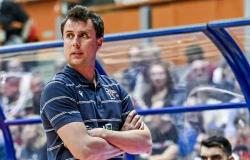STOP – Hoe and rake? There is much more behind an urban garden. First and foremost the Ambito XX led by Alessandro Ranieri. “Daily practices of sociality, agriculture and active longevity: this is an urban garden. Important elements for the territory that a regional tender, intercepted by the Area, makes possible”.
The subtitle of the Orto Urbano di Fermo project is ‘a fruitful idea’. “To make something that exists profit, there is no need to invent, but perhaps to coordinate and develop good practices”. Vicolo degli Orlandi in Fermo becomes the center of the project, it is located along the castle walls near the former Cavour school, and is already creating communities.
A vegetable garden managed by Legambiente in harmony with Unipop. “Good practice has become the starting point for a growth path. Thanks to Silvia Bellabarba and Ghazoi Hassen we have developed the partnership with the two associations, Auser, Inrca, the Bagalini company, which is the private partner, and Fermo” continues
With the 5 thousand euros of financing, a small greenhouse will be developed and together with Bagalini the people who will work on it will be technically accompanied. “A company that started the agri-age project some time ago, an experiment in social agriculture linked to different ages” says Ranieri. All this is combined with workshops made possible by the partners.
The Municipality has a new regulation for the management of urban gardens, studied in detail by councilor Ingrid Luciani. There are three regulated areas: Sacred Hearts, San Tommaso and Marina Palmense. Now the fourth area is added, which is very suggestive. “We have social gardens, for over 60s, then there is the category for associations, like the one along the walls which for years has been managed by Legambiente which has its headquarters in the tower. In this way we want to help citizens regain possession of some spaces, we aim for a return to the idea of sharing and a healthier lifestyle”.
Green autobiography, food education, art in the garden, horticulture and cooking workshops, which will use the structure of the Bagalini company: here are some of the activities planned together with the Unipop team.
Federico Spagnoli, president of Legambiente, is the manager of the area having his headquarters in the tower where he shares projects with the other environmental associations: “The garden was created with spontaneous and medicinal herbs, an area that we often use for lessons with elementary and middle school students. An education for the little ones who often live far from nature. A place open to all for cultural activities. We must encourage contact with greenery, it is useful for those who have difficulties, it helps the elderly, it is education for the young.”
This is how the vegetable garden was born and today it evolves. “The first task remains that of structuring something that goes beyond the financed project. I hope the municipality will support us in the future in the economic management of all this and perhaps in the purchase of some equipment. We’ll see, in the meantime we work on the memories of the elderly and their relationship with nature, the first meeting will have 20 participants” intervenes Ettore Fedeli, president of Unipop and former mayor.
And then there is food education which will be based on garden products. “Each workshop can accommodate around twenty people, strictly over 65. The third step is the artful vegetable garden, using watercolour, music and poems in May” resumes Ettore Fedeli who dreams of making the Monte Cacciù forest a center of environmental education. Then there are the horticultural workshops in June, together with the Bagalini company, which is also the hub of the cooking lessons also in June.
Paolo Calcinaro, mayor of Fermo, believes in it, starting from the request for expansion of spaces: “A project that we like, it looks at those who need living spaces, those who would find help in a green corner. It is also a model of circular economy. Thinking about the new social housing spaces between the former Tannery and via Graziani, there will never be a shortage of green spaces managed by those who will live in the areas. This is light community support. Legambiente was able to start with the schools, Ettore Fedeli acts as a glue between several realities, the Sector plans with his staff and we, as always, are there”.
Partner of all this will be the web radio with five informative pills on the garden, healthy eating and the various topics that will be addressed. At the end of everything, a greenhouse will remain, built by Bagalini, but managed by Legambiente and whoever makes itself available.
Tags: urban garden place community Fermo public private sectors work greenhouses laboratories #65s







